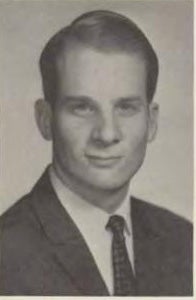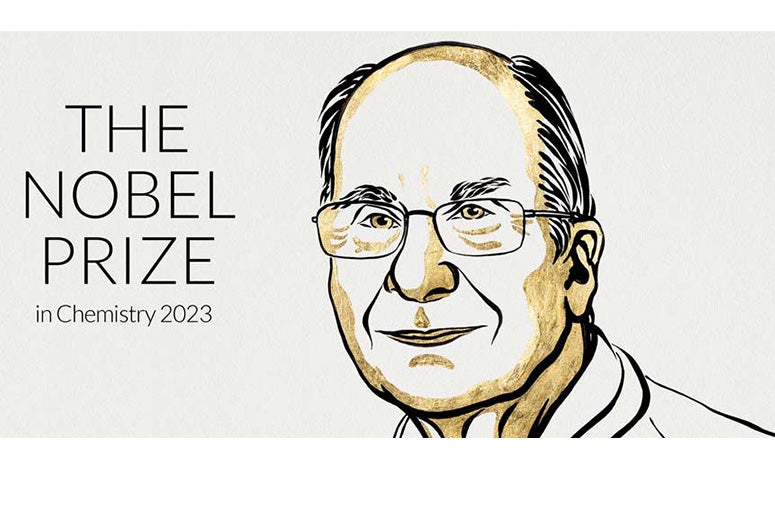
Rice University alumnus Louis Brus ’65 has been awarded the Nobel Prize in chemistry for the “discovery and development of quantum dots,” nanosized particles with unique properties “that now spread their light from television screens and LED lamps,” according to a Royal Swedish Academy of Sciences announcement today.
Brus, who started his undergraduate education at Rice in 1961, shares the distinction with Moungi Bawendi and Alexei Ekimov. Their work has been crucial to the development of nanotechnology, which has helped drive major computing advances and transformed electronics. The Swedish Academy highlighted Brus’ role as “the first scientist in the world to prove size-dependent quantum effects in particles floating freely in a fluid.”
While at Rice, Brus studied chemistry, physics and mathematics and developed “a love of history that has stayed with me to this day,” he said in a statement delivered when he received the 2008 Kavli Prize in nanoscience. Brus praised his undergraduate alma mater for its “rigorous, fundamental, yet broad education.”

“Rice was a wonderful place,” he said in the address.
“Today’s announcement recognizes Louis Brus’s pathbreaking, inspirational scientific career, one that has blended chemistry and physics in ways that have opened up entirely new areas of research and discovery,” Rice President Reginald DesRoches said. “We are proud of and salute our alum Louis and congratulate him and his colleagues for this well-deserved award.”
After earning his bachelor’s degree at Rice, Brus earned a Ph.D. in chemical physics from Columbia University in 1969 then served as a scientific staff officer at the U.S. Naval Research Laboratory in Washington, D.C. Upon concluding his service as a Navy lieutenant, Brus joined the AT&T Bell Labs in Murray Hill, New Jersey.
Naomi Halas, an engineer and scientist who was promoted to Rice's highest academic rank earlier this year, said she met Brus at Bell Labs, “where he was a distinguished member of the technical staff long before he moved to Columbia.”
“Lou has had the visionary ability to come up with entirely new ideas and the determination to realize them in the laboratory,” said Halas, Rice University Professor and director of the Smalley-Curl Institute and the Laboratory for Nanophotonics. “Along with his co-laureates, he created a link between nanomaterials and optics that never before existed. The transition from laboratory research to the real world ⎯ QLED TVs, for example ⎯ provides the strongest rationale for fundamental research.”
Brus, who is currently the Samuel Latham Mitchill Professor Emeritus and Special Research Scientist at Columbia, maintained ties to Rice through his relationships with faculty and service on Chemistry Department visiting committees.
“Lou’s pioneering work on quantum dots changed the way we see the world, and opto- electronics would not be where they are today without his contributions,” said Ramamoorthy Ramesh, Rice’s vice president for research and professor of materials science and nanoengineering and of physics and astronomy. “His accomplishments go hand-in-hand with a reverence for fundamental research and the role of universities in promoting discoveries.”
Angel Martí, chair of Rice’s Chemistry Department and a professor of chemistry, bioengineering, and materials science and nanoengineering, said that Brus’ foundational research on quantum dot nanoparticles has far-reaching implications in many areas of chemistry and resonates with other remarkable research that Rice is a home to, including the work on carbon nanoclusters that won a Nobel for Richard Smalley and Robert Curl in 1996.
“Louis Brus has been a friend of the Chemistry Department over the years,” Martí said. “The chemistry research community at Rice is really excited to receive this news. We feel inspired to continue Rice’s culture of research excellence at all levels, and to further our mission to educate and nurture the next generation of leaders in the chemical sciences. We look forward to celebrate this important achievement with Prof. Brus.”
- Image downloads:
-
https://news-network.rice.edu/news/files/2023/10/LouisBrus.jpg
CAPTION: Louis Brus (Illustration by Niklas Elmehed © Nobel Prize Outreach)
https://news-network.rice.edu/news/files/2023/10/TheRiceThresher_Louis-Brus.jpg
CAPTION: An announcement lists Louis Brus among the 1964 cohort of Will Rice Fellows, “selected on primarily academic achievement.” The Rice Thresher (Houston, Tex.), Vol. 51, No. 28, Ed. 1 Wednesday, April 29, 1964. (Image courtesy of the Woodson Research Center’s Digital Collections/Rice University)https://news-network.rice.edu/news/files/2023/10/campanile1964rice-Louis_Brus.jpg
CAPTION: Louis Brus in Rice University’s yearbook, The Campanile, 1964. (Image courtesy of the Woodson Research Center’s Digital Collections/Rice University)
https://news-network.rice.edu/news/files/2023/10/campanile1965rice-266.jpg
CAPTION: Louis Brus in Rice University’s yearbook, The Campanile, 1965. (Image courtesy of the Woodson Research Center’s Digital Collections/Rice University) - About Rice:
-
Located on a 300-acre forested campus in Houston, Rice University is consistently ranked among the nation’s top 20 universities by U.S. News & World Report. Rice has highly respected schools of Architecture, Business, Continuing Studies, Engineering, Humanities, Music, Natural Sciences and Social Sciences and is home to the Baker Institute for Public Policy. With 4,552 undergraduates and 3,998 graduate students, Rice’s undergraduate student-to-faculty ratio is just under 6-to-1. Its residential college system builds close-knit communities and lifelong friendships, just one reason why Rice is ranked No. 1 for lots of race/class interaction and No. 4 for quality of life by the Princeton Review. Rice is also rated as a best value among private universities by Kiplinger’s Personal Finance.

